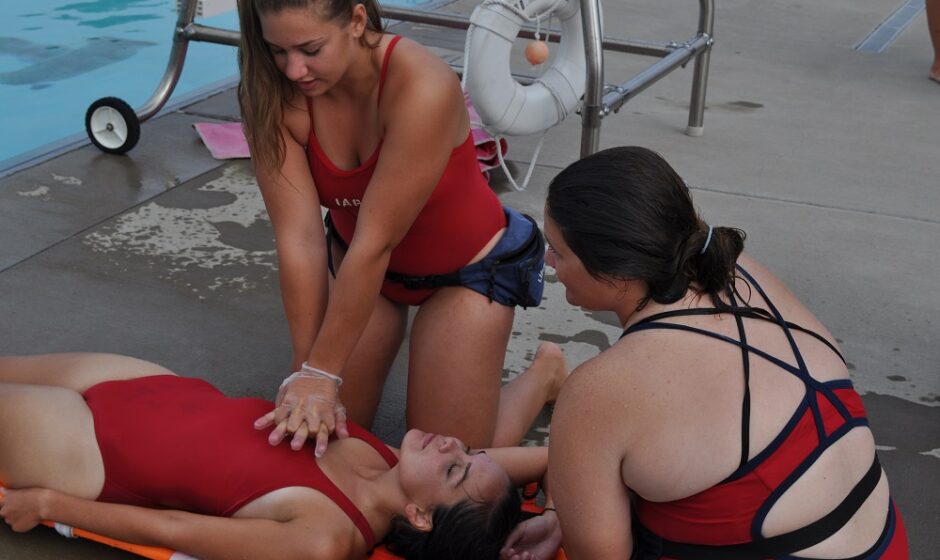Becoming a certified lifeguard is a rewarding journey that combines physical fitness, life-saving skills, and a strong sense of responsibility. Lifeguard training prepares individuals to ensure the safety of swimmers and beachgoers, making it an essential role for public safety. In this article, we’ll explore the core components of lifeguard training, the qualities that make an effective lifeguard, and highlight the American Lifeguard Association’s (ALA) leading programs to help you excel in this field.
Understanding Lifeguard Training: An Overview
Lifeguard training is rigorous and covers both physical and theoretical skills essential for emergency response. Candidates must undergo extensive training to prepare for real-world challenges, including identifying hazards, handling emergencies, and conducting rescues efficiently. Lifeguards are not only responsible for rescuing distressed swimmers but also for preventing accidents by enforcing safety rules and monitoring water activity.
Training covers four main areas:
- Water Safety and Rescue Techniques: Training begins with mastering water safety principles, including techniques for spotting hazards and implementing safe practices for swimmers. Lifeguards learn several types of rescue techniques, such as active rescues (assisting a conscious person in danger) and passive rescues (retrieving unconscious individuals). They are trained in handling various situations, from panicked swimmers to strong currents, ensuring they can respond quickly and appropriately.
- First Aid and CPR: A critical part of lifeguard training is learning first aid and cardiopulmonary resuscitation (CPR). These skills are essential because lifeguards are often the first responders to accidents. Trainees learn to recognize symptoms of common emergencies, such as drowning, heat exhaustion, and spinal injuries, and administer life-saving treatments until further medical help arrives.
- Physical Fitness: Lifeguarding demands a high level of physical fitness. Lifeguard training includes swimming tests and physical conditioning exercises, such as endurance swimming, diving, and carrying weights in water. These exercises build the stamina, strength, and agility necessary for rescues. Swimming requirements typically include timed swims, underwater retrievals, and the ability to tread water without using hands.
- Surveillance and Communication: Lifeguards must have keen observational skills to monitor large areas and identify risks before they escalate. Training includes techniques for effectively scanning water bodies, recognizing signs of distress, and communicating with other lifeguards or emergency responders.
Essential Skills for Lifeguards
While lifeguard training imparts the technical skills required, certain qualities are essential for success:
- Alertness: A lifeguard must be constantly vigilant, even during quiet moments. The ability to stay focused helps lifeguards respond faster in emergencies.
- Quick Decision-Making: Lifeguards must make rapid decisions, especially in situations where seconds matter. Training sharpens this skill by exposing lifeguards to various emergency scenarios.
- Physical Endurance: Lifeguarding involves long hours under the sun, often requiring physical strength and stamina for rescues. Physical endurance, therefore, becomes crucial in fulfilling these duties effectively.
- Empathy and Calmness: Interacting with distressed individuals and families is a part of a lifeguard’s role. Remaining calm and compassionate during emergencies helps manage the situation and reassures those involved.
Benefits of Lifeguard Training
Pursuing lifeguard training comes with numerous personal and professional benefits:
- Life-Saving Skills: Lifeguard training teaches you how to save lives, instilling a sense of confidence and empowerment. These skills are invaluable in both lifeguarding roles and daily life.
- Career Opportunities: Certified lifeguards have a range of job opportunities in various settings, including pools, beaches, water parks, and recreational facilities. Lifeguarding is also a great stepping stone for careers in emergency services or healthcare.
- Improved Physical Fitness: The physical training involved boosts fitness levels, building strength, stamina, and resilience.
- Teamwork and Leadership Skills: Lifeguards work as part of a team and must collaborate closely with others to ensure safety. This environment fosters leadership and teamwork skills, which are valuable in any career.
Lifeguard Certification Requirements
Lifeguard training typically begins with a basic swimming test. Candidates are often required to:
- Swim a specified distance (usually around 300 yards) without resting.
- Retrieve a submerged object, typically a 10-pound weight, from the pool’s deep end and bring it back to the surface.
- Tread water for a certain period (often two minutes) without using their hands.
After passing the preliminary swimming assessment, candidates move on to the core training, which includes CPR, first aid, and specific rescue skills. Training duration can vary, but most programs take 20-30 hours over a few days to complete. Once certified, lifeguards must complete periodic recertification courses to ensure their skills remain sharp and up-to-date.
Why Choose the American Lifeguard Association (ALA) for Training?
The American Lifeguard Association (ALA) is renowned for its high-quality, comprehensive lifeguard training programs. Here’s why ALA’s lifeguard training stands out:
- Comprehensive Curriculum: ALA offers a curriculum that meets or exceeds industry standards, covering water safety, rescue techniques, CPR, first aid, and more. The ALA curriculum is constantly updated to align with the latest safety standards and best practices in aquatic safety.
- Experienced Instructors: ALA-certified instructors bring extensive real-world experience to the training process. These instructors are trained to equip lifeguards with practical skills that prepare them for real-life emergencies.
- Flexible Training Options: ALA offers flexible training options, including both in-person and hybrid courses. This flexibility makes it easier for individuals to access training that suits their schedule and learning style.
- Nationwide Recognition: ALA certification is widely recognized across the United States. This recognition means ALA-certified lifeguards can work in a range of locations, from local pools to major resorts and recreational centers.
- Continual Support: ALA provides ongoing support to its certified lifeguards, helping them stay updated with the latest in aquatic safety and lifeguarding techniques. ALA also offers recertification programs to ensure lifeguards maintain their skills over time.
Preparing for ALA Lifeguard Training
If you’re interested in ALA’s lifeguard training, it’s beneficial to prepare ahead of time. Here are a few tips to ensure you succeed:
- Practice Swimming: Ensure your swimming skills are solid, especially for endurance and treading water.
- Study Basic First Aid: Familiarize yourself with basic first aid principles. This will help you absorb the material faster during training.
- Build Physical Endurance: Incorporate regular cardiovascular and strength training exercises into your routine to build the endurance needed for the physical demands of lifeguarding.
- Research the Program Requirements: Check specific requirements for the ALA training program you’re enrolling in, as prerequisites and course formats may vary.
Lifeguard Recertification with ALA
Lifeguard certification requires periodic renewal to keep your skills fresh and your certification active. ALA offers recertification courses that provide refresher training in CPR, first aid, and water rescue techniques. The recertification process is typically shorter than initial training, making it more convenient to keep your credentials up to date.
Lifeguard Training: The Path to Making a Difference
Lifeguarding is more than a job; it’s a commitment to protecting lives and ensuring a safe environment for everyone. The journey to becoming a lifeguard involves learning essential skills, building strength and stamina, and preparing mentally for emergency situations. With organizations like the American Lifeguard Association offering top-notch training, aspiring lifeguards have access to the best resources and instruction available.
If you’re passionate about helping others and looking for a career that challenges and rewards, lifeguard training through the ALA can be the perfect starting point. Not only will you gain the skills to handle emergencies confidently, but you’ll also embark on a career path that makes a meaningful difference every day. Whether you’re interested in poolside work or envision yourself patrolling beaches, the ALA’s programs offer the preparation and support needed to thrive in this vital role.



